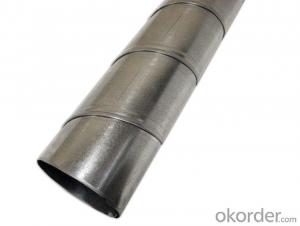Steel rebar, also known as reinforcement bar, is an essential component in modern construction. It’s a versatile material that adds strength and durability to various structures. But what exactly is steel rebar, and how is it used in different applications? Let’s dive into the world of steel rebar and explore its importance and applications in our daily lives.
The Essence of Steel Rebar
Steel rebar is made from carbon steel, which is alloyed with other elements to enhance its properties. It’s characterized by its high tensile strength, corrosion resistance, and ductility. The rebar is available in different shapes and sizes, with the most common being round, square, and deformed bars. The deformations on the surface of the rebar increase the bond between the rebar and the concrete, ensuring a strong and stable structure.
A Closer Look at the Manufacturing Process
The process of making steel rebar is quite fascinating. It starts with the selection of high-quality steel billets, which are then heated and rolled into the desired shape. The rebar is heat-treated to achieve the desired mechanical properties, such as yield strength and elongation. After the heat treatment, the rebar is cooled, cut to length, and bundled for distribution.
Applications of Steel Rebar
Steel rebar is used in a wide range of applications due to its strength and durability. Here are some of the most common uses:
– Building Construction: Rebar is a crucial element in the construction of buildings, providing support and stability to the structure. It’s used in columns, beams, slabs, and foundations.
– Infrastructure Projects: Bridges, tunnels, and highways rely on rebar for their strength and durability. It’s used to reinforce concrete, ensuring that these structures can withstand heavy loads and harsh weather conditions.
– Industrial Construction: Factories, warehouses, and other industrial buildings often use rebar to reinforce their concrete structures, providing additional support and stability.
– Residential Construction: Homes and apartments also benefit from the use of rebar, especially in the construction of foundations, retaining walls, and other load-bearing elements.
The Role of Steel Rebar in Earthquake-Prone Areas
Earthquakes can cause significant damage to structures, but the use of steel rebar can help mitigate this risk. Rebar, when combined with proper construction techniques, can increase a building’s resistance to seismic forces, reducing the likelihood of collapse during an earthquake.
Environmental Impact and Sustainability
While steel rebar is an essential material in construction, it’s also important to consider its environmental impact. The production of steel rebar consumes a significant amount of energy and generates greenhouse gas emissions. However, efforts are being made to reduce the environmental footprint of steel production, such as using recycled materials and implementing energy-efficient technologies.
The Future of Steel Rebar
As the world continues to urbanize, the demand for steel rebar is expected to grow. Innovations in material science and construction techniques are leading to the development of new types of rebar with improved properties, such as higher strength and better corrosion resistance. Additionally, there’s a growing interest in the use of alternative materials, such as fiber-reinforced polymers, which could complement or even replace steel rebar in some applications.
Conclusion
Steel rebar is a fundamental material in the construction industry, playing a vital role in the strength and stability of countless structures. Its applications are diverse, and its importance cannot be overstated. As we look to the future, it’s essential to continue exploring ways to improve the sustainability and performance of steel rebar, ensuring that it remains a key component in our built environment for years to come.

